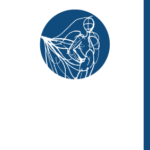Abstract
After the entry into force of the Ministerial Decree 10/08/2018 and subsequent Ministerial Decree 14/01/2021 which determine the need to specify in the Magnetic Resonance Safety Regulation the methods and frequency provided for the quality checks, a corporate RM quality assurance program has been realized and attached to the Safety Regulations itself. After a review of the indications in the literature, the PRO-Project PRO-MRI phantom built following the criteria and requirements of the ACR was identified.
Images were acquired with standard SpinEcho sequences (T1-T2 weighted) verifying the Uniformity – Ghosting – geometric distortion – spatial resolution – low contrast resolution – slice positioning accuracy – layer thickness – SNR (FAT-WATER) indicators.
The images were analyzed automatically using the Pro-Project Pro-Control software and manually using the ImageJ software.
The results highlighted the need for a very accurate positioning of the phantom inside the reel to overcome problems of non-recognition of the inserts in the automatic analysis and the appearance of artifacts.
The conclusions from the automated analysis were then compared with the manual measurements.
The checks showed an overlap between the two sets of analyzes but also the evidence that these checks fail to bring out, from the point of view of the pass/ fail criteria, the real quality of the images acquired.
The MR safety expert, in agreement with the Physician Responsible for Clinical Safety, is considering decreasing the range of acceptability of some limits suggested by the documentation with particular regard to artifacts (ghosting).

This work is licensed under a Creative Commons Attribution 4.0 International License.
Copyright (c) 2022 Stella Gusella, Marcello Gava, Giovanni Marchetto





